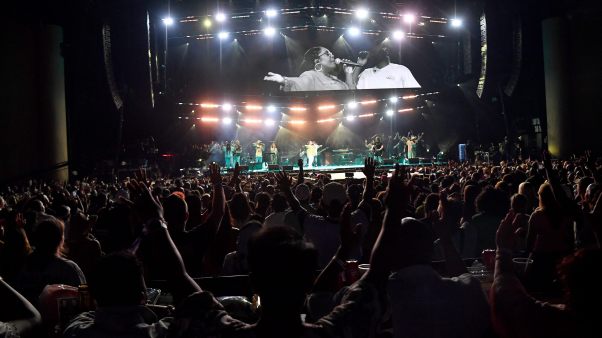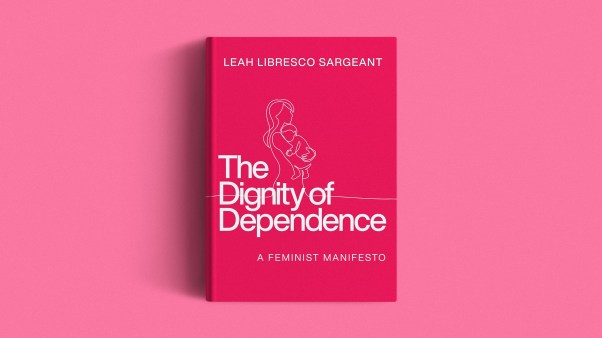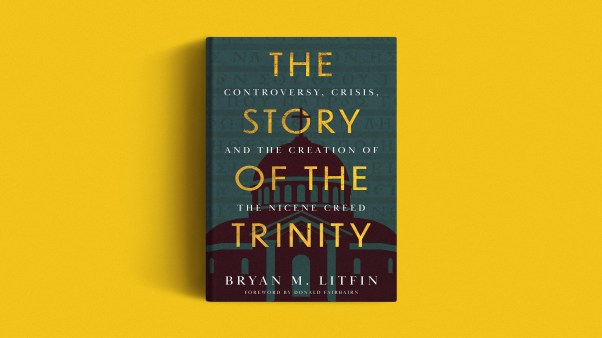He can part water, command fire and wind, and move mountains. He’s not a super-Christian—he’s Avatar Aang, master of the four elements and protagonist of the Netflix’s live-action version of Avatar: The Last Airbender (ATLA), which began streaming Thursday.
Watching a live-action remake of a beloved animation is fraught with trepidation. In a poor adaptation, humor is either awkwardly forced or axed completely; costumes and casting choices can take on a cosplay veneer; and condensed, mashed, or added storylines suggest a fan-inspired medley put on by a high school drama club. The new ATLA, while a marked improvement from the 2010 travesty, sadly slips into these foibles more often than not.
I hate to render that verdict, because I wanted so badly to love this show. And that longing is part of a greater desire to see imagined worlds in the “real world”—to be, as C.S. Lewis famously wrote, “united with the beauty we see, to pass into it, to receive it into ourselves, to bathe in it, to become part of it,” to “get in.” Merely looking at a rendering of beautiful stories, the mythologies with which “we have peopled air and earth and water with gods and goddesses and nymphs and elves”—or, in this case, benders and Avatars—isn’t enough.
As Lewis recognized, at its heart, this longing is rooted in Scripture (Rev. 22:1–5). And it’s why, even with repeated disappointments (I’m looking at you, Dragonball Z, Beauty and the Beast, and Ginny Weasley), I’ll still watch live-action adaptations every time.
I first followed the story of Aang and his friends nearly two decades ago, when Avatar first aired as an animated series on Nickelodeon. At the time, I had never seen anything like it: a fantasy world clearly made in America but shaped by Asian (and Native) cultures, mirroring my own experiences as a Korean American. The first-rate writing tackled complex themes with hilarity and depth, and characters like Zuko became some of my all-time favorites.
When all three seasons released on Netflix in 2020, ATLA experienced something of a revival, claiming the title of the most-viewed show on the streaming platform. Critical acclaim deemed it close “in spirit and complexity to The Lord of the Rings trilogy,” “both a comfort watch and a means of catharsis.” Rotten Tomatoes rated it 100 percent fresh. I knew ATLA had made it as a cultural fixture when I came across a large, climbable replica of Appa the sky bison at a shopping mall in New Jersey.
This new version largely follows season 1 of the original. In a world where some people can “bend,” or telekinetically control, either water, earth, fire, or air, 12-year-old airbender Aang (Gordon Cormier) is the Avatar, the only one who can bend all four elements and who is therefore responsible for keeping the peace between the four other groups (or “nations”) of benders. But just when he is needed most, as the famous intro scene recounts, Aang vanishes, preserved in ice.
A century later, he resurfaces to a world dominated by the Fire Nation, who have completely wiped out the Air Nation and are at war with the Earth and Water Nations. Along with waterbender Katara (Kiawentiio Tarbell) and her brother, Sokka (Ian Ousley), Aang embarks on a journey to stop the Fire Nation and its ruler, Fire Lord Ozai (Daniel Dae Kim), and to restore harmony.
This retelling is marred by hit-or-miss CGI, a few questionable casting choices, amateur acting moments, and some poor writing. Yet despite these shortcomings, it gets some things right. Aiming for an older audience, the episodes lean into difficult concepts that are dealt with more obliquely in the animated version. The production team’s careful attention to cultural accuracy—from large-scale renderings like the Southern Air Temple and the city of Omashu to the smallest details of tea sets, funeral scenes, and on-screen signage—is commendable. And the episode with Koh (George Takei) in the spirit realm succeeded in being truly frightening, at least for my kids.
Those successful elements bring to life a modern myth that, like all compelling stories, resonates with reality. Of course, Lewis’s reflection on our love of such myths comes with a caveat: As Christians, we must engage culture with discernment, even when we’re watching “safe” shows made with kids in mind.
Because of its Asian influences, ATLA is something of a Buddhist fantasy, which is apparent in story elements from reincarnations and enlightenment of the Avatar to the air temple monks and an overall theme of balance in the universe. But, just as Lewis wrote of Western, pagan-inspired mythologies, Eastern stories can fund thoughtful Christian reflection or appreciation.
In Avatar, an obvious point of reflection is Aang’s possession of powers over the elements that appear in Scripture as miraculous demonstrations of God’s presence or authority. We’re told that when we follow Jesus, a spring of living water will well up from our souls (John 4:14). With faith as small as a mustard seed, we can tell a mountain to move (Matt. 17:20). God’s Spirit stirs through us like wind and breath, unloosing our tongues and bringing dead bones to life, however metaphorically (Acts 2:2, Ezek. 37:9). We are sons and daughters of a God who is the all-consuming fire—and to know him is to have a fire shut up in our bones (Heb. 12:29, Jer. 20:9).
When we read Scripture passages like these, it isn’t enough for us to appreciate them at a literary or intellectual level, or even to see them alive in our imaginations. We are made to live the reality that Scripture speaks of, to experience life in Christ for ourselves. Faith, in the end, always seeks the live-action version.
It’s fitting that this latest adaptation of ATLA was released during Lent. Like that of the Avatar’s four nations, our time is marked by division, war, and power-hungry rulers. It’s here in the darkness of the Lenten season, both literally and figuratively, that we can most anticipate Holy Week—Maundy Thursday and that first Communion—wherein this Lewisian desire to “get in” is most beautifully embodied.
At that Last Supper, Jesus says yes to our longing. He invites his disciples to not just watch him from the sidelines but to become one with him—to take, eat, and drink of his very self, to know him as the promised Savior, to be united with him completely in his life, death, and resurrection (Matt. 26:26–28, John 17:23). Here I am, he says: the real pillar of fire and cloud, the breath of life, the cornerstone, the fountain of life. Follow me.
That invitation still stands. Jesus, the true master of the elements—both earthly and sacramental—fulfills the biblical prophecies and narratives and embodies them once and for all, enfolding us into his story: the ultimate reality. Thank God it’s unimaginably better than the new Avatar.
Sara Kyoungah White is a copy editor at Christianity Today.











